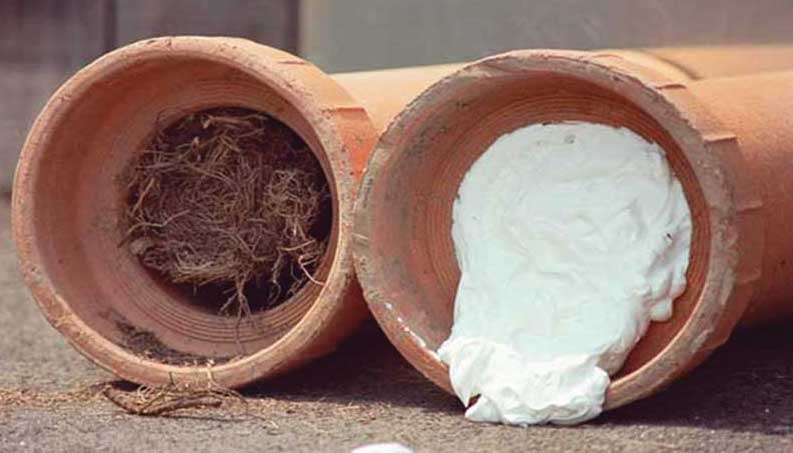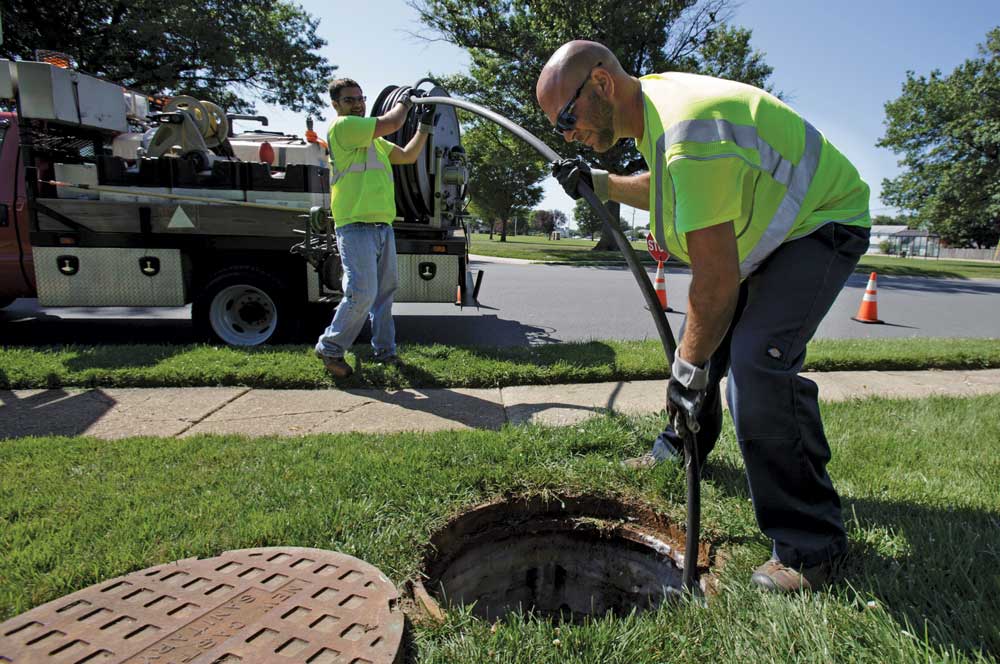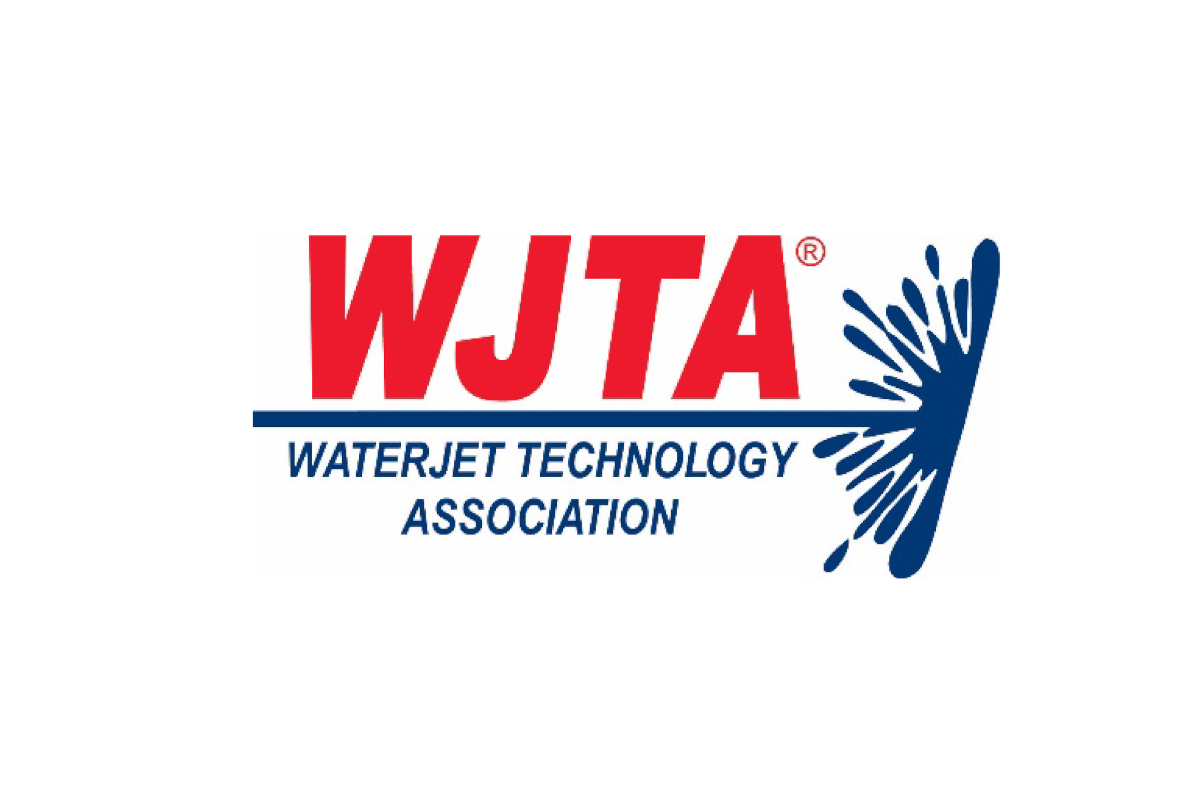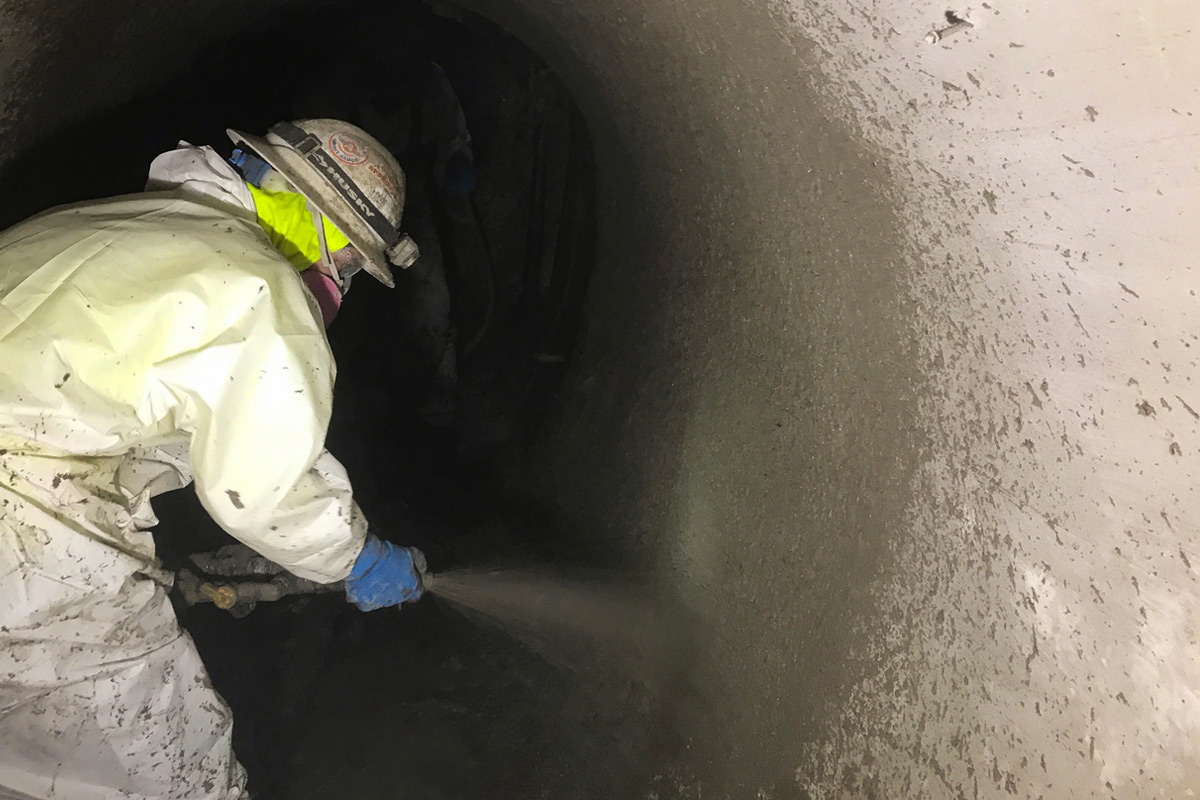
Root Control Success in New Castle County, Delaware
Chemical root control (CRC) is the application of EPA-registered herbicides to sewer lines to kill existing tree roots and control future root growth.
There are many advantages to implementing a chemical root control program instead of using alternative methods.
Methods such as root cutting/pruning can provide immediate relief of stoppages and blocks, however the roots tend to grow back more aggressively. This can create more root mass over time, which can lead to bigger problems and a higher price tag.
A chemical application allows roots to be treated without harming already aged pipe, as well as avoiding any structural damage to sensitive pipes. Lastly, a chemical root control program is a more proactive approach and provides a long-term solution, all while remaining non-toxic and avoiding damage to plants above ground.
RELATED: Poised for Growth – Utah Drain Cleaner Tackles Roots, Wipes and Locates with Precision
Case in Point
Like most municipalities that incorporate chemical root control into their overall maintenance program, New Castle County, Delaware, initially did so to decrease the number of backups, stoppages, and overflows. After several years of proven results, they also came to understand that, when following industry guarantee programs for chemical root control, there is also an asset management component.
When the roots have gotten so bad, and have been mechanically cut for decades, resulting in broken and cracked pipe, chemical root control acts a stop gap, ensuring that the pipes do not get any worse than they are. This gives those managing a collection system time to plan a longer rehabilitation or replacement program, vs. emergency dig ups due to pipe collapses.
However, when pipes are identified with light to medium roots, with no structural damage done yet, chemical root control can literally add decades to the lifetime of those pipes, which is one of the main goals of asset management, sustainability.
New Castle County, Delaware, owns and operates over 1,800 miles of sanitary sewer. As is the case with most collections systems, dealing with tree roots in the sewers was one of the largest problems facing The County. The need to maintain roots through mechanical cutting was hindering preventative maintenance and the ability to stay on track with maintenance frequencies.
New Castle County then entered into a consent agreement with The State of Delaware, in which certain benchmarks were agreed to in order to significantly decrease the number of sanitary sewer overflows the county was experiencing. At that time, the county managers decided to start investigating technologies, both existing and emerging, that would help them reach these benchmarks. One of the technologies that was quickly identified was chemical root control. It was at that time the decision was made to ramp up their existing program.
RELATED: Case Studies in Root Control

In spring 2005, The County initiated a chemical root control pilot with Duke’s Root Control, Inc. to judge whether chemical root control was a better alternative. The pilot consisted of treating roughly 6,000 lf of 8-in. sewer pipelines. The initial results of this pilot led to an additional 40,000 lf being performed the following year. Based on the effective applications of the two-phased pilot, New Castle County began to budget annually for chemical root control, with the program growing to about 475,000 lf being treated annually.
Study Findings & Results
Today, 17 years after the original pilot, chemical root control plays a pivotal part in The County’s overall CMOM program, (Capacity, Management, Operations and Maintenance).
“We have been able to divert our crews from cutting roots allowing us to focus on building a preventative maintenance program with cleaning and CCTVing our system in a more proactive approach,” says county sewer operations manager Rob Roff.
Not only has the County been able to significantly reduce backups and stoppages directly caused by roots, as well as decrease the damage being done by roots, they have also been able to get a handle on other issues in the collections system due to their ability to be more proactive. “Thirty years ago, our collection system was mostly reactive,” says county operations service manager Kevin Penoza. “Now, in large part due to the chemical root control program, we have become very, very proactive.”

Where once the County was unable to address its maintenance needs effectively and stay ahead of the process, they are now able to provide a much higher level of service for their customers with the same resources as they had in 2005. Processes such as cleaning, CCTV, rehabilitation, trunk line and interceptor inspections and capacity improvements have all been improved by the reduced time addressing root related issues.
RELATED: California Cleaning: The City of Alameda Turns to Chemical Root Control to Maintain Sewer System
“Since adopting the chemical root control program,” Roff adds. “We have seen our SSOs reduced by 80 percent, primarily from the performance of the root control product and the confidence we have in the service, that we can allow our crews to focus on the work that we really want to proactively go after.”
Chemical root control promises to remain a large part of New Castle County’s CMOM program, allowing them to continually tighten up their collection system through focused proactive maintenance.
In addition to this, the County has now engaged with Duke’s to take a “Triage” approach to their maintenance and repair efforts, continuing to incorporate emerging technologies such as large diameter sonar, acoustic inspections, and other asset management tools.
New Castle County is recognized in the region as having one of the most effective overall collection system management approaches and is frequently asked to speak at local seminars and share their information with other utilities.
Brittany Danielson is the marketing manager at Duke’s Root Control.




